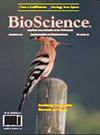Spray drying of cellulases produced by Bacillus sp. SMIA-2
IF 0.5
4区 农林科学
引用次数: 0
Abstract
Microbial cellulases present biotechnological potential to be used in several industries, including food, brewery and wine, industrial waste for chemical feedstock, animal feed, pulp and paper, agriculture, textile and detergent production. In this work, cellulases produced by the thermophilic Bacillus sp. SMIA-2 in submerged cultures containing sugarcane bagasse, corn steep liquor and passion fruit rind flour were spray-dried, in an attempt to improve their stability for industrial purposes. The cellulases were spray dried and analyzed before and after the drying process and subsequent storage. A Central Composite Design (CCD) 23 was used to investigate the effect of different concentrations of arabic gum and microcrystalline cellulose, as well as the spray dryer inlet temperature on the cellulase spray drying process. The results evidenced that the combination of 1.0 % (w/v) arabic gum and 1.0% (w/v) microcrystalline cellulose, at inlet temperature of 70 °C, was effective in maintaining the activities of both avicelases (avicel-hydrolyzing enzymes) and carboxymethylcellulases (carboxymethylcellulose-hydrolyzing enzymes - CMCase). The dried avicelase was completely preserved when stored at 5oC, while the CMCase retained 89% of its activity, which indicates promising potential for industrial uses, especially in detergent formulations.喷雾干燥由芽孢杆菌 SMIA-2 生产的纤维素酶
微生物纤维素酶具有生物技术潜力,可用于多个行业,包括食品、酿酒和葡萄酒、用作化学原料的工业废物、动物饲料、纸浆和造纸、农业、纺织品和洗涤剂生产。在这项工作中,对嗜热芽孢杆菌 SMIA-2 在含有甘蔗渣、玉米浸出液和百香果皮粉的浸没培养物中产生的纤维素酶进行了喷雾干燥,试图提高其稳定性,以用于工业目的。对纤维素酶进行喷雾干燥,并在干燥过程前后和随后的储存过程中对其进行分析。采用中央复合设计(CCD)23 研究了不同浓度的阿拉伯胶和微晶纤维素以及喷雾干燥机入口温度对纤维素酶喷雾干燥过程的影响。结果表明,在入口温度为 70 °C 的条件下,1.0%(w/v)阿拉伯树胶和 1.0%(w/v)微晶纤维素的组合能有效保持阿维菌素酶(阿维菌素水解酶)和羧甲基纤维素酶(羧甲基纤维素水解酶 - CMCase)的活性。干燥的阿维菌素酶在 5 摄氏度下保存完全,而羧甲基纤维素酶则保留了 89% 的活性,这表明阿维菌素酶具有工业用途的潜力,特别是在洗涤剂配方中。
本文章由计算机程序翻译,如有差异,请以英文原文为准。
求助全文
约1分钟内获得全文
求助全文
来源期刊

Bioscience Journal
AGRICULTURE, MULTIDISCIPLINARY-AGRONOMY
CiteScore
1.10
自引率
0.00%
发文量
90
期刊介绍:
The Bioscience Journal is an interdisciplinary electronic journal that publishes scientific articles in the areas of Agricultural Sciences, Biological Sciences and Health Sciences. Its mission is to disseminate new knowledge while contributing to the development of science in the country and in the world. The journal is published in a continuous flow, in English. The opinions and concepts expressed in the published articles are the sole responsibility of their authors.
 求助内容:
求助内容: 应助结果提醒方式:
应助结果提醒方式:


